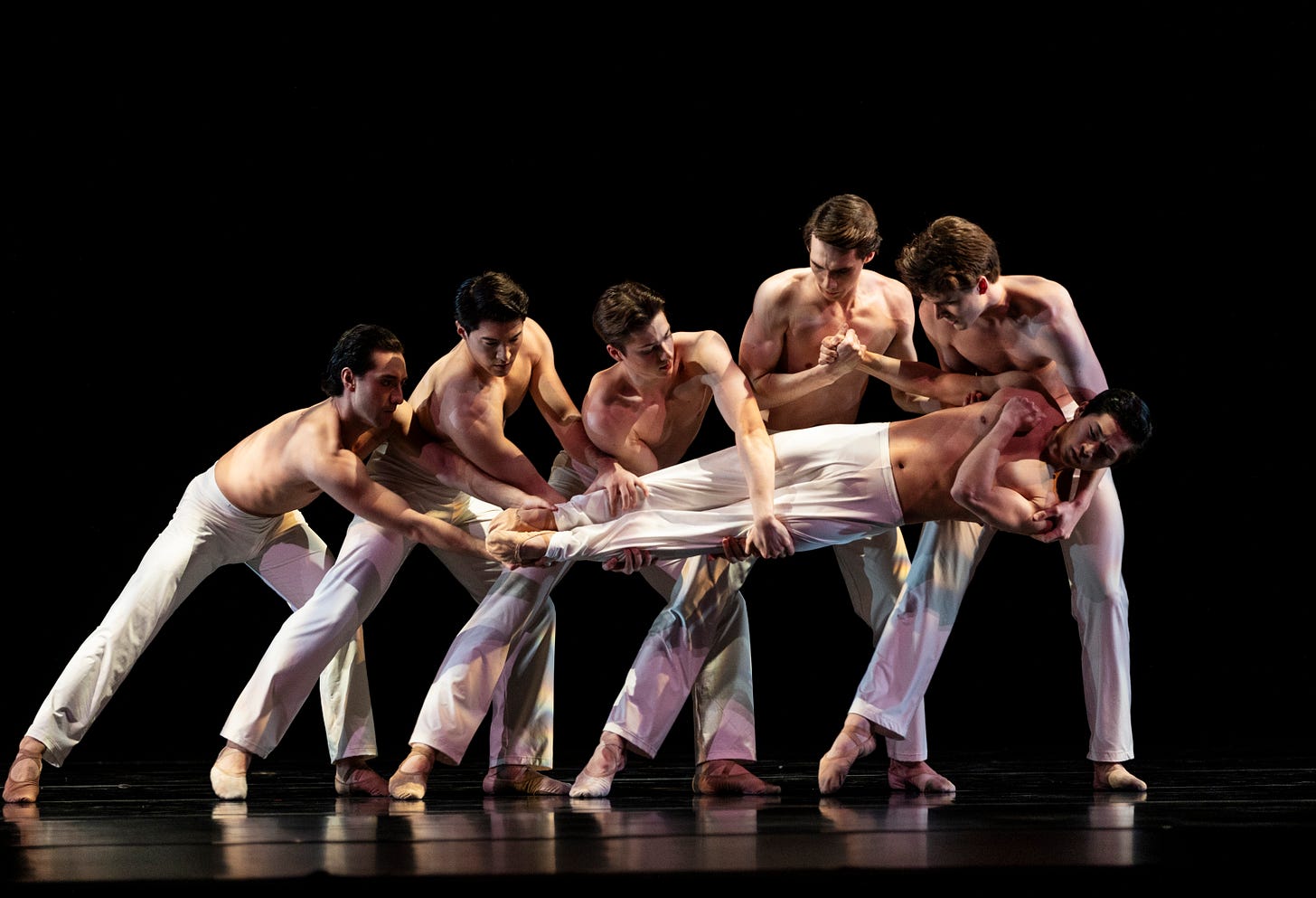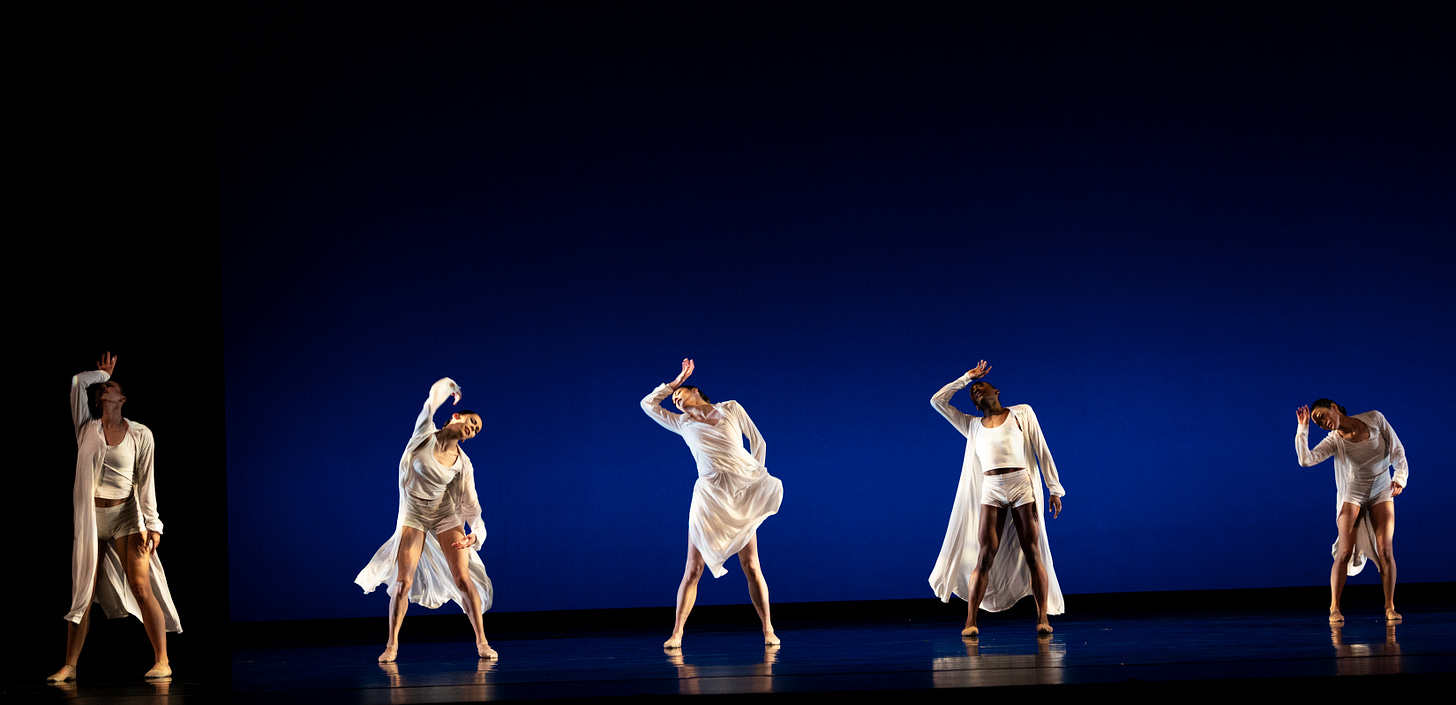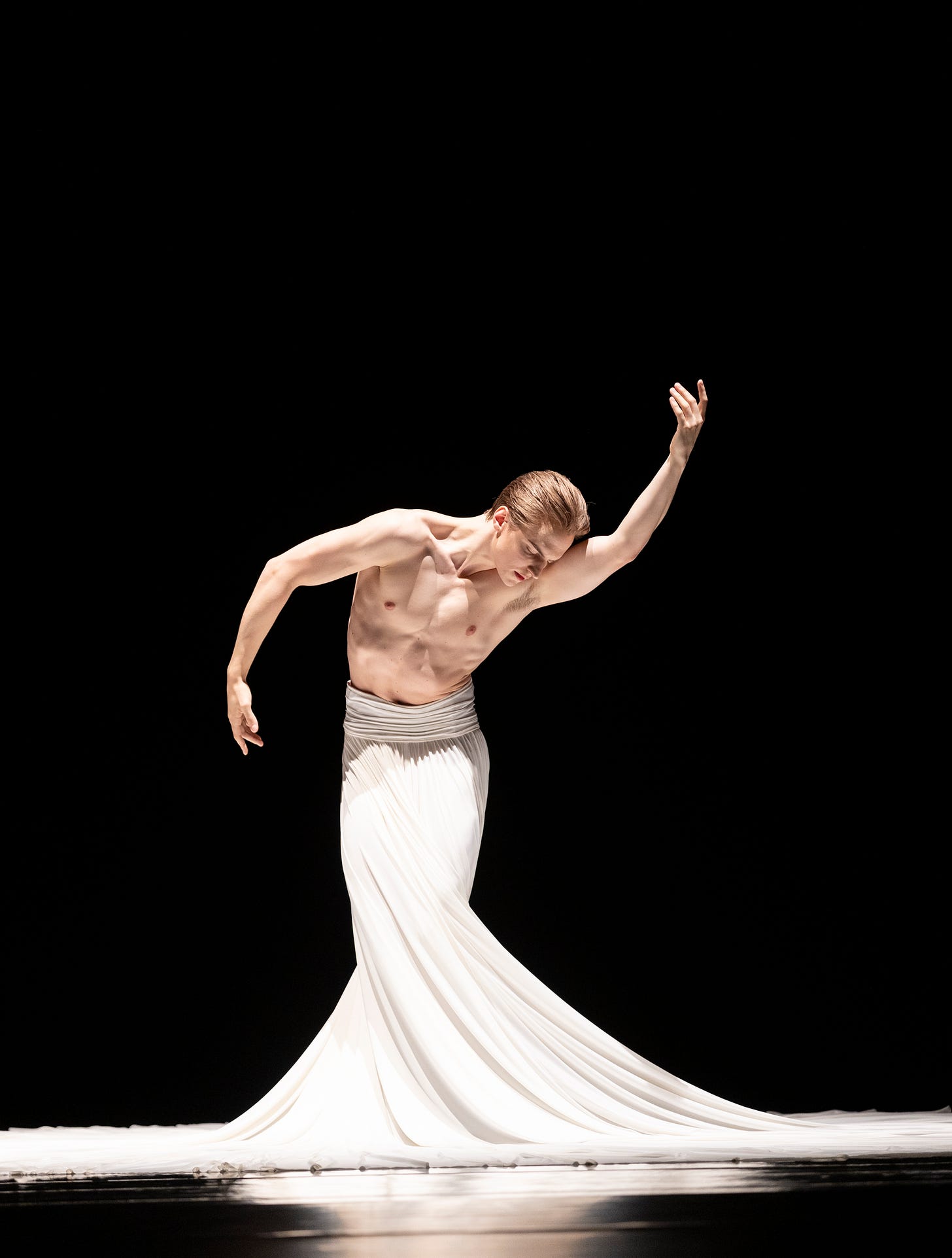
As I sat watching the opening night performance of a triple-bill at Pacific Northwest Ballet last week, something kept running through my head: ‘she’s an effing genius.’
The “she” in question was choreographer par excellence Crystal Pite, who’s been blowing minds since her girlhood on Vancouver Island. I could just as easily have been speaking about the other two dancemakers on this particular bill, Twyla Tharp and soon-to-be PNB choreographer-in-residence, Jessica Lang, whose magnificent solo, The Calling, is on this program. Huzzah, and more about that later. All three artists are big names in dance; Tharp has been blazing trails for at least a half century.
To my mind, each of these three choreographers individually would shine brightly on almost any dance bill; for this current PNB triumph, their works serve both as individual dance jewels and as amplifiers of the programs’ other dances. (By the way, they’re not merely great female choreographers, they’re kick-ass great artists, period. Artists, not merely women, although I might argue their identity as women adds a wonderful perspective to their artistry.) If you’re reading this you either know their work or you appreciate pretty photos. Or both. If you haven’t yet seen their dances, now is definitely the moment. This particular program runs through Sunday, April 21 at McCaw Hall.
Ok, to touch on each work sequentially, dating both from their premieres and the order on the PNB program: Tharp’s Sweet Fields made its debut in Berkeley, California in 1996, but despite PNB’s rich repertoire of Tharpiana, it didn’t hit the McCaw Hall stage until 2022. Set to a live acapella performance of hymns by the Tudor Choir, conducted by PNB’s multi-talented Doug Fullington, this ballet was inspired by the precision of both the music we hear and the geometric patterns we see.
Tharp divides her 12-member cast into two groups, male and female-presenting dancers. If you’re familiar with 18th and 19th century American religious song, you’ll recognize the harmonies and rhythms that feature so prominently in genres like Shaker hymns and shape-note singing. The music is solemnly spiritual, but watching the dancers execute a series of skipping steps in unison, or slicing their hands in front of their torsos, you can’t miss the joyful underpinnings of these sweet songs. Sweet Fields is definitely an ensemble work, featuring many of PNB’s newer company members, but some familiar dancers stood out for me, including soloists Kuu Sakuragi, Christian Poppe and Clara Ruf Maldonado.
We have a slight pause between this group of Norma Kamali-costumed PNB company members and the single, white-skirted performer at the center of Jessica Lang’s compelling solo, The Calling. Lang’s work is really a super-short duet for dancer and a magnificent white skirt imagined by choreographer Lang and designed by Elena Comendador. Principal Dylan Wald performed it masterfully on opening night, not moving around the floor so much as twisting down and around the extravagant skirt, then rising up to full height and extending his arms. It’s beautiful, spiritual and inspirational all at the same time He’s one of those dancers who just grab your attention, now and forever.
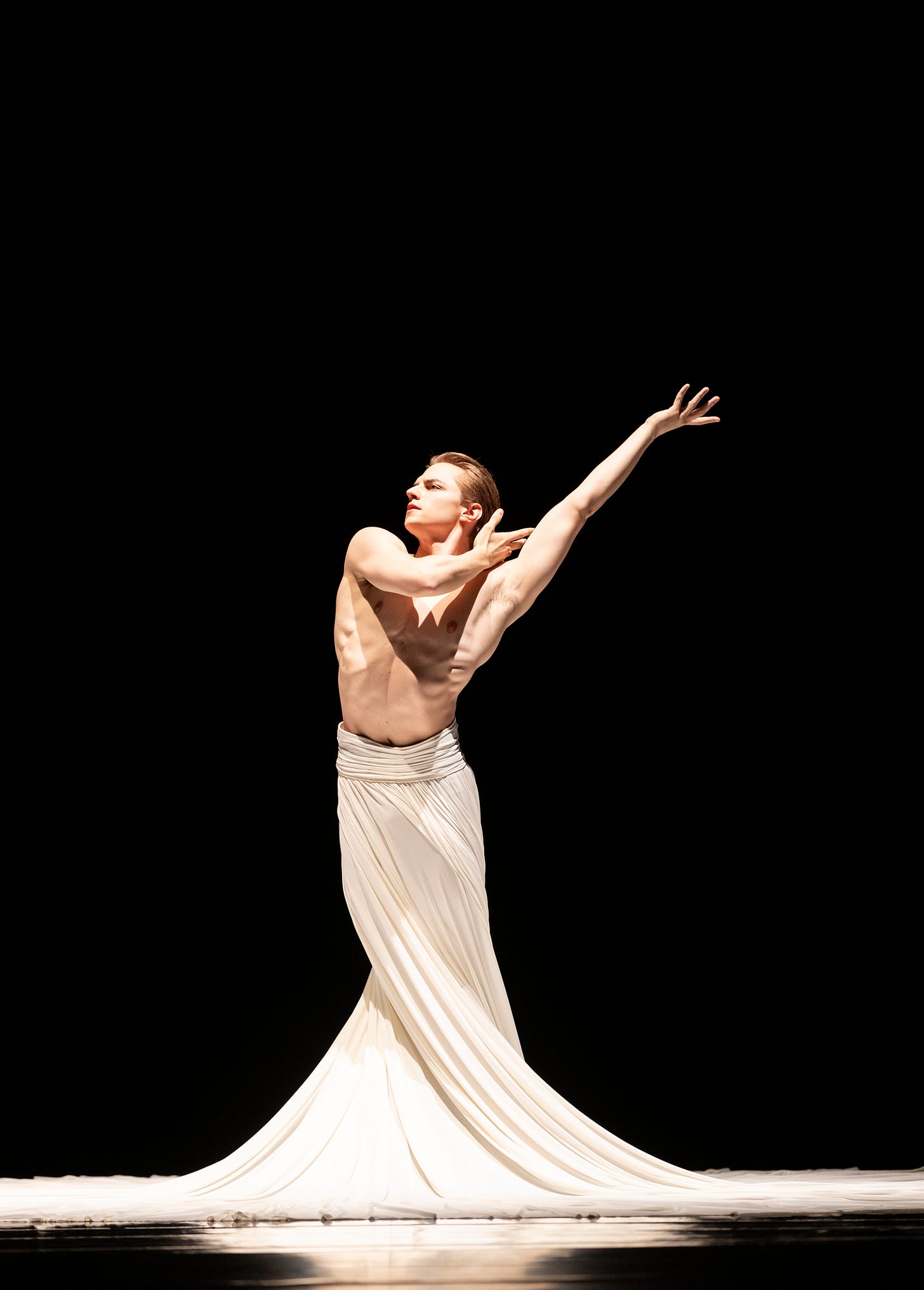
I remember when Wald first danced The Calling at PNB in 2015. He was a fairly new company member at the time but he put me under a spell that, nine years later, has only intensified. If you watch any of the videos of his 2015 performance, you see the seeds of the same poised dancer, although he looks like he’s barely out of his teens. I checked: he was a super fresh-faced 19 years old. The confidence he exudes now just blows my mind.
If I could create a mini-dance series, I’d assemble each of the PNB dancers who’ll perform Lang’s solo this time around, and watch them all over the course of a week. In addition to fabulous Dylan Wald, we could see the equally masterful James Yoichi Moore, who retires in June. Plus go see soloist Leah Terada and corps de ballet dancer Zsilas Michael Hughes, who should be amazing!
The Calling is short and spare—a dance and an amazing skirt; Pite’s The Seasons’ Canon is huge, with dozens of dancers, earworm-worthy riffs on Vivaldi’s Four Seasons by Max Richter, a hypnotic digital set designed and executed by Jay Gower Taylor and Tom Visser, and last but never least, Crystal Pite’s brilliant choreography. I told you she was an effing genius and I meant it
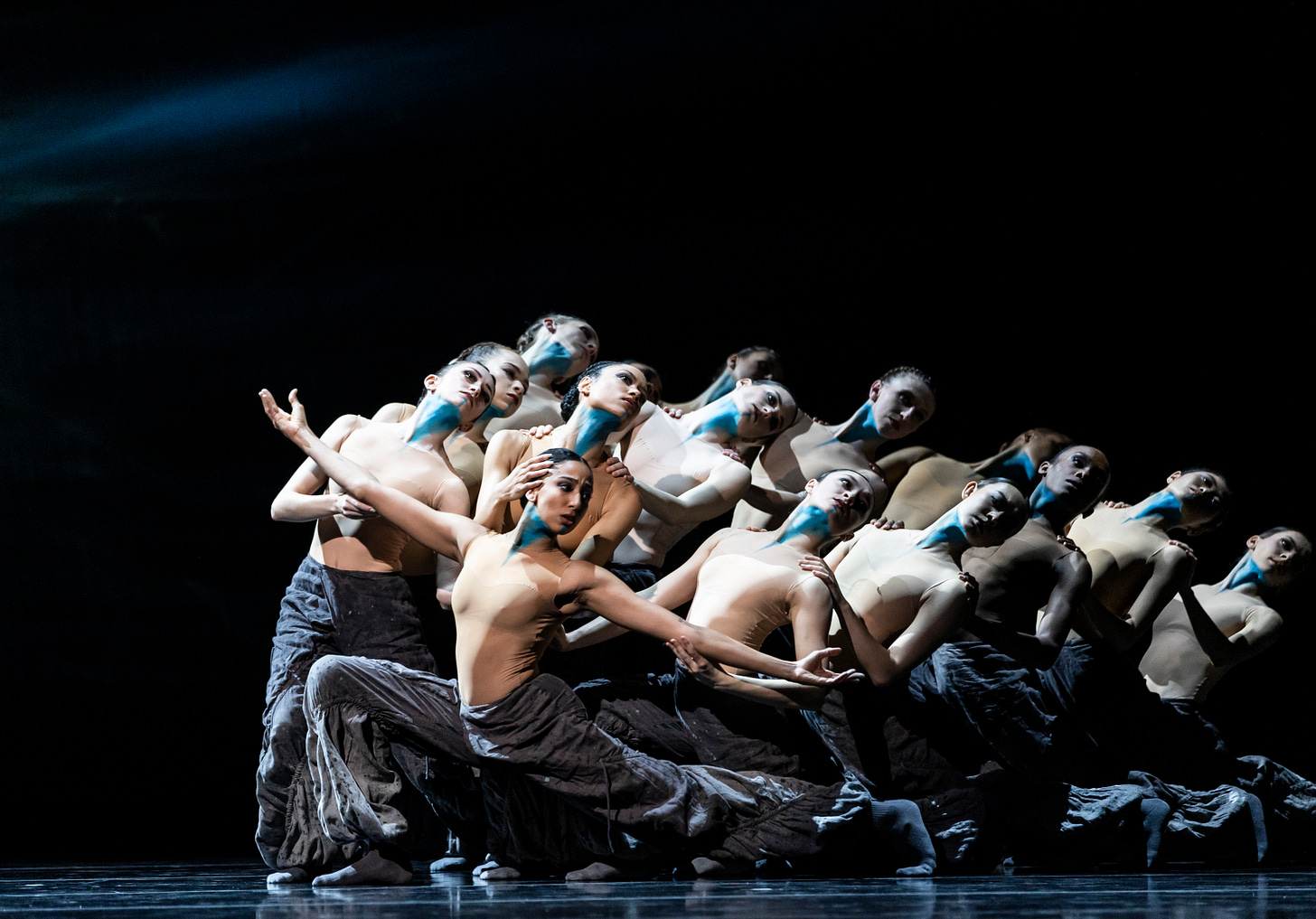
Pite conjures a world where a 50+ member group of dancers twitches heads in unison to Richter’s music, and we in the audience pinned, breathless to our seats. I feel the same way when I see anything she creates, from a small dance for her own company, Kidd Pivot, to something the size of The Seasons’ Canon.
I remember first seeing Kidd Pivot at the much more intimate venue On the Boards, performing Pite’s Dark Matters. I was captivated by Pite’s dancers’ technical prowess, but her attention to detail was maybe even more amazing. Truly, every string of lights had a reason for being onstage. That attention carries through all of her choreography, even to something as huge as Seasons’ Canon.

When you see 50+ dancers standing in a line raising and lowering their arms in a timed sequence that creates an illusion highlighted by what seems like a shower of sparkling confetti, you just shake your head in disbelief. Or at least I did, and I can’t wait to relive the experience. There’s a reason for everything in this piece. Angela Sterling’s photos are fabulous, but they only hint at the magical web Pite weaves.
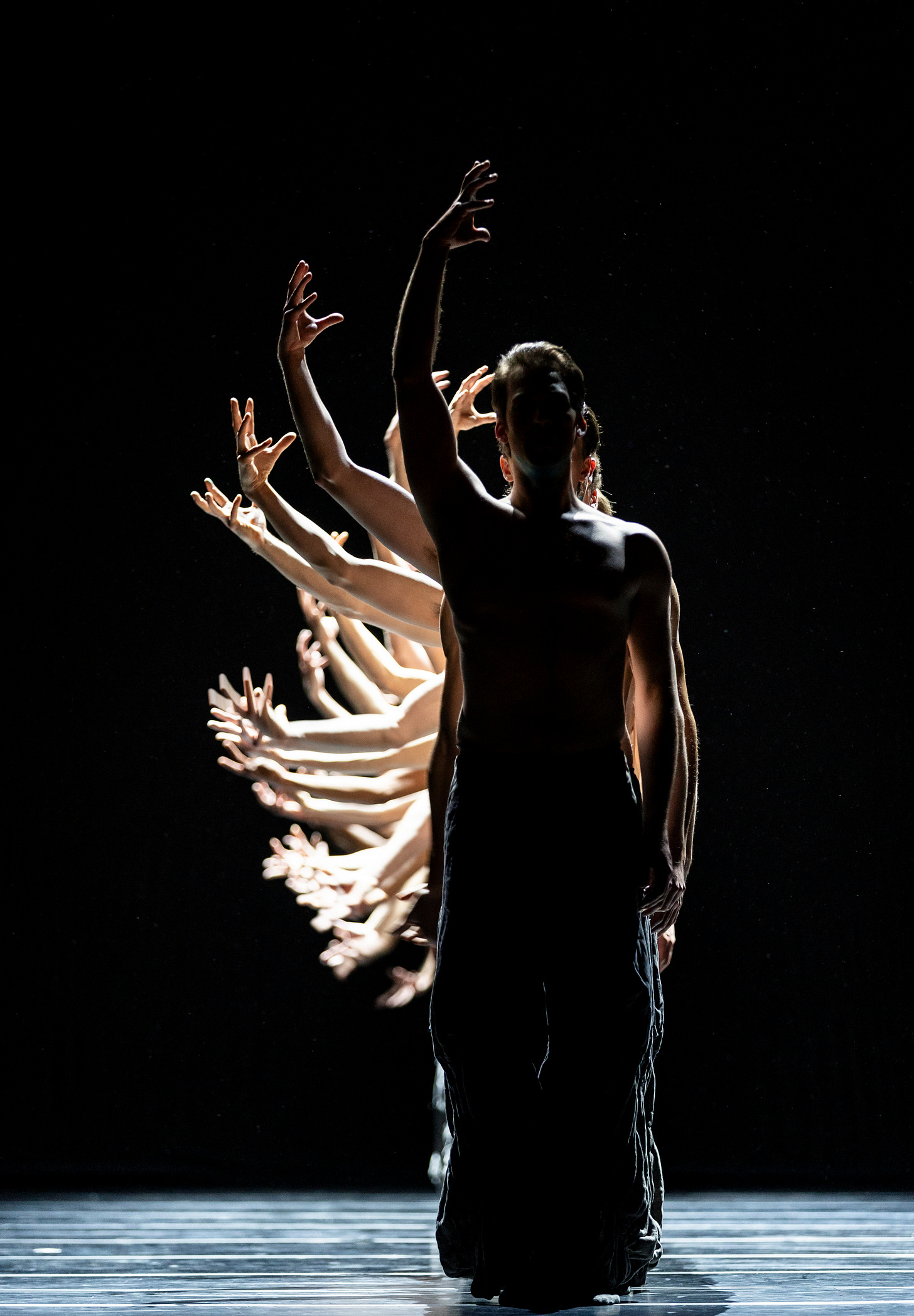
I can’t say it more forcefully: hurry to get your tickets. Last year The Seasons’ Canon, even without Sweet Fields and The Calling, drew an onslaught of ticket buyers the second weekend, especially after we dance writers started raving about it. In combination with the Lang and the Tharp works, the triple bill on tap at McCaw is, for me, a rare and delectable program. Truly, you want to see this show.
.





